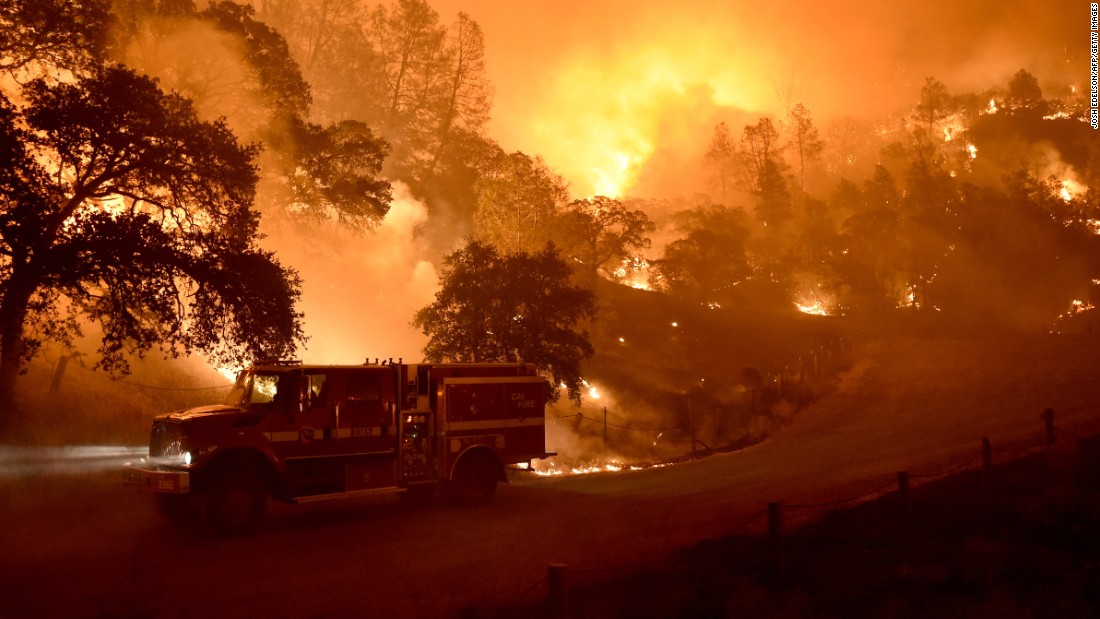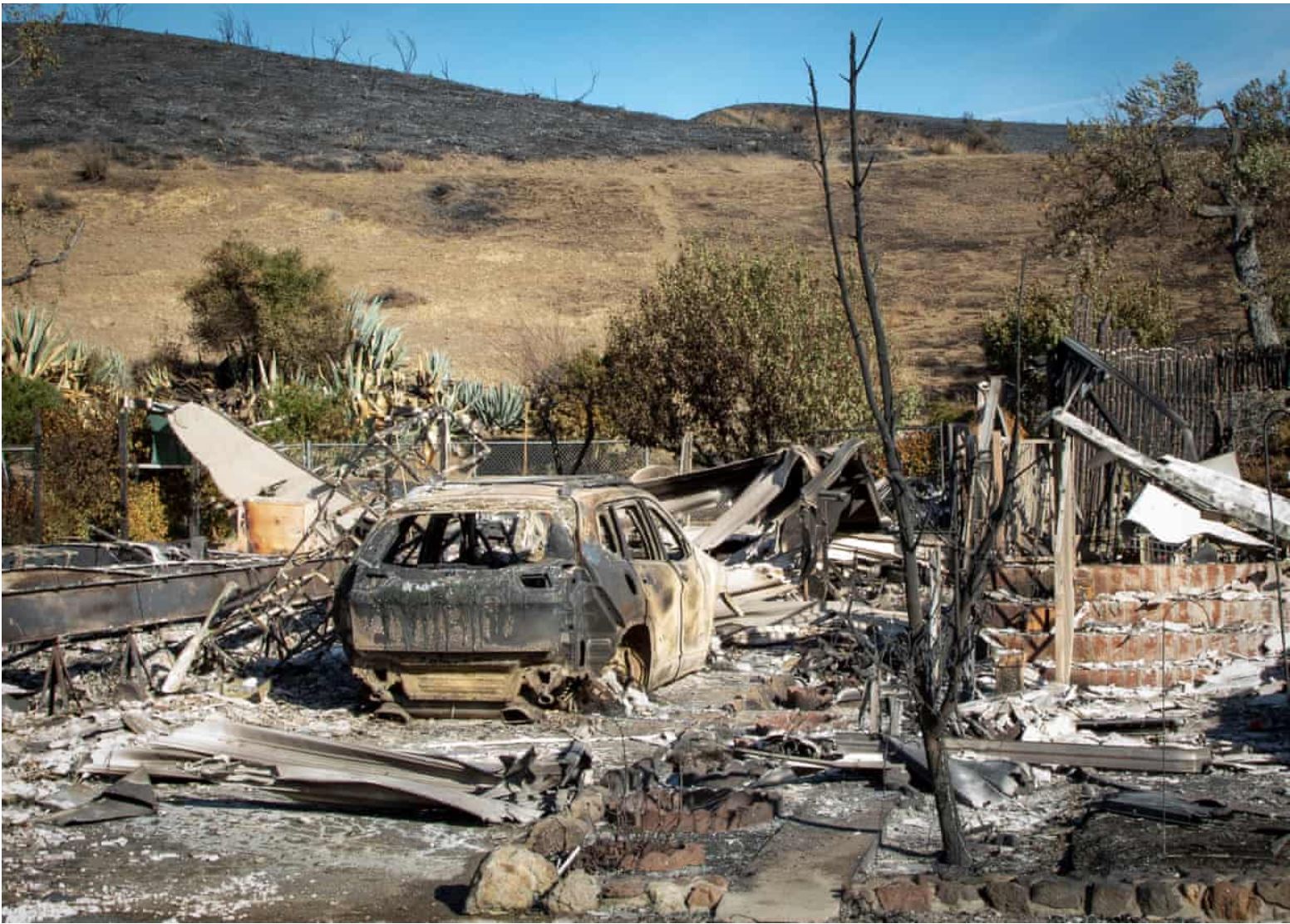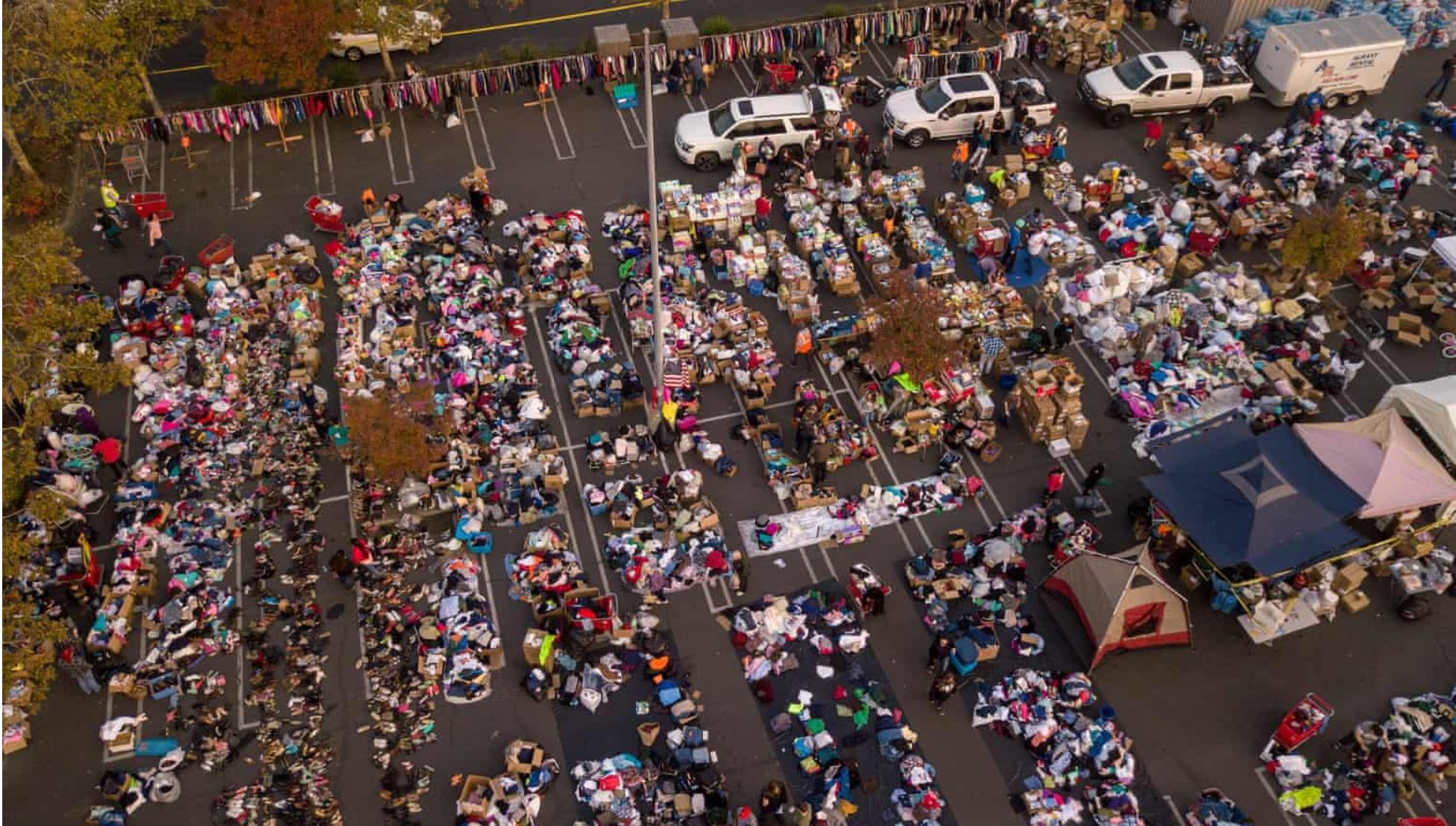As the smoke clears, we realize that we still can’t choke our tears. The threat of rain sits heavy in the clouds and even with all the will in the world we can’t prepare ourselves for what might happen as refugee camps face the potential of mudslides. Tens of thousands are currently without homes, a quarter of a million acres of California have been destroyed and yet the stories are slipping away from the headlines, replaced in turn by more news from around the world, designed to capture our ever-decreasing attention spans. We never seem to want to talk about refugees in any capacity because it makes us uncomfortable, but as the climate worsens, there will only be more and more of us needing help.

We need to talk about California. Well, these wildfires in general, that can stretch the entire length of North America and are worsening with each passing season. There are no two ways about their occurrence as a direct result of climate change, but I’m interested in the practical solutions that we can explore and implement to prevent further loss of life.
Controvery ensued a couple weeks ago when Trump boldly declared that forest management was the root of the blazes seen across the state. At a time when finger-pointing was the last thing on any of the victims’ minds, the President seemed bizarrely defensive and void of compassion in a couple of his tweets:


Get smart? OK! Time to consult a specialist then! Fire Scientist and Associate Professor, Matthew Hurteau, of the University of New Mexico was quick to criticize the notion that forest management was solely to blame, by highlighting that a large portion of the burning land is, in fact, not forested.

Fire is a very normal part of California’s ecosystem, taking care of dead vegetation and clearing the way for new growth and is supposed to be limited by precipitation. The problem that we’re having is that climate change is forcing the state into a more intense state of drought each summer due to a lack of rainfall. This means that the percentage of dry and dead vegetation increases, which in turn adds more fuel to the fire.
In southern California—where the vegetation is vastly different to the north—the fires have been consuming scrubland (so: grasses and shrubs). An increase in the frequency of fires (caused by climate change) means that native scrub vegetation is being killed off before it reaches maturity and is able to produce seeds. This then clears the way for invasive species to take root. Happening year after year, this results in a change in the ecosystem from flora which is native to a medley of rapidly-growing and rapidly-burning grasses and shrubs.
Hurteau went on to describe the Camp fire of the north and explained how population density is part of the problem in areas of thick woodland at risk of fire. Timber-constructed buildings that catch alight are immensely hot and facilitate the spread of the burn much more effectively than those fires might otherwise reach. We want to live amongst beautiful forests, but are we fully aware of the risk and how we might be destroying those very ecosystems that inspire us by doing so?
As things stand at present, tens of thousands are displaced from their homes, with no guarantee of when normal life might resume and the threat of mudslides is making tensions run even higher. The smoke has also spread 3,000 miles across the country and enveloped Washington DC and New York City, adding to an already dire state of affairs for our air quality which the latest studies have revealed is cutting two years off our global lifespan. The wildfires are just one event in a sequence: a domino effect of destruction as a result of our actions and neglect.
The notion that we need to “halt climate change” leaves many of us shrugging, because truly it seems like some kind of vague and overwhelming burden that we can’t quite get a grasp on. Personally, I’m more interested in the practical, tangible solutions. As Hurteau explained, California’s southern wildfires were unquestionably not a result of poor forest management. And the real issue with all this scrubland burning is that native flora don’t have enough time to recover and re-seed before being burned once more. Therefore, we need to look at how better to support California’s chaparral which would start with allocating more land to nature to do its thing, perhaps with an initial boost from us to revegetate.
Next up, while we can’t prevent northern Californians from building their houses in and amongst the trees, we might consider better resources for the next time fire strikes, which it will. And a more robust back-up plan to support those displaced. It’s part of the risk of living in a fire zone, so we should be better resourced to cope with that; much like those in hurricane zones or tornado alley. Just imagine if even one tenth of the resources obligatorily used to combat gun crime while guns are still so prevalent (absolutely bonkers to us Brits!) could be designated to this instead. It’s an alternative worth pondering.

But what about the drought? What about the awful California drought that isn’t going to ease ever, unless we make some pretty radical choices to slowly start to aid the climate? You know the drill: avocados and almonds. As long as our demand stays sky-high, we’ll keep up with the intense irrigation required to nourish these cash crops. How might you be able to support whatever grows local to you instead? As the drought worsens, we must be prepared for crop failure and the risk of famine. I know we don’t want to talk about it, but if we’re to “get smart,” then we simply must. How might things change if we completely take the pressure off California and instead invest more in hydroponics elsewhere in the country, plus rooftop and other urban growing? These inspirational ideas for tackling drought from around the world are also worth exploring, because lives depend on it.
At least 81 lives have been lost and hundreds more individuals are missing as a result of the past two weeks’ destruction. It’s impossible to fathom the kind of trauma that one faces when everything that comprises life as you know it is threatened. I wouldn’t wish on anyone. If we “get smart,” we’ll see this November’s crisis as a harsh warning: a call to make radical changes immediately. If we sit back and wait for things to worsen, I don’t think we’ll be able to forgive ourselves.
Sign every petition, bounce ideas off your peers, make easy changes that require no effort, and remember that living by example serves as the best inspiration to others. California offers some of the most awe-inspiring natural beauty on the west coast, but it won’t be there for much longer unless we act now. And I, for one, certainly don’t want to carry that burden.
Have you been affected by the wildfires? How are you fighting climate change in your city to help California?
Also by Kat: How To Inspire People To Care About The Environment, According To Sir David Attenborough
Newsflash: This Ocean Cleanup Effort Will Give You Reason To Hope
Get more like this–Subscribe to our daily inspirational newsletter for exclusive content!
—




